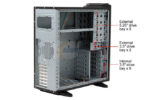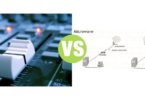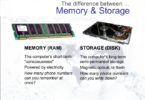Multidimensional vs Relational Database
Summary: Difference Between Multidimensional and Relational Database is that a multidimensional database stores data in dimensions. Whereas a relational database is a two-dimensional table, a multidimensional database can store more than two dimensions of data. These multiple dimensions allow users to access and analyze any view of the database data. While A relational database is a database that stores data in tables that consist of rows and columns. Each row has a primary key and each column has a unique name. A file processing environment uses the terms file, record, and field to represent data.

Multidimensional Database
A multidimensional database stores data in dimensions. Whereas a relational database is a two-dimensional table, a multidimensional database can store more than two dimensions of data. These multiple dimensions allow users to access and analyze any view of the database data.
A Webmaster at a retail business may want information about product sales and customer sales for each region spanning a given time. A manager at the same business may want information about product sales by department for each sales representative spanning a given time. A multidimensional database can consolidate this type of data from multiple dimensions at very high rates of speed. Nearly every multidimensional database has a dimension of time. The content of other dimensions varies depending on the subject.
No standard query language exists for multidimensional databases. Each database uses its own language. Most are similar to SQL.
Relational Database
A relational database is a database that stores data in tables that consist of rows and columns. Each row has a primary key and each column has a unique name. A file processing environment uses the terms file, record, and field to represent data. A relational database uses terms different from a file processing system. A developer of a relational database refers to a file as a relation, a record as a tuple, and a field as an attribute. A user of a relational database, by contrast, refers to a file as a table, a record as a row, and a field as a column.
In addition to storing data, a relational database also stores data relationships. A relationship is a link within the data. In a relational database, you can set up a relationship between tables at any time. The tables must have a common column (field). In a relational database, the only data redundancy (duplication) exists in the common columns (fields). The database uses these common columns for relationships. Many organizations use relational databases for payroll, accounts receivable, accounts payable, general ledger, inventory, order entry, invoicing, and other business-related functions.
Also Read:
Difference Between Relational Database and Object Oriented Database
Difference Between Relational Database and Data Warehouse
Difference Between SQL Database and SQL Server







Leave a Comment
You must be logged in to post a comment.